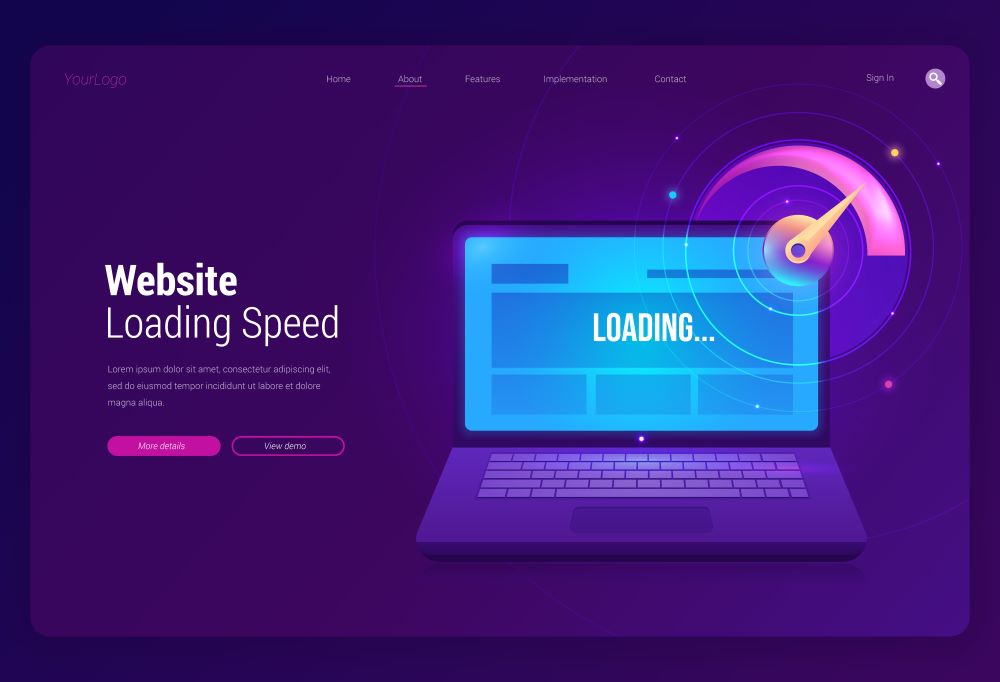In today’s fast-paced digital world, where information is just a click away, users have high expectations when it comes to website performance. A slow-loading website can lead to frustration, decreased engagement, and ultimately, a loss of potential customers. Website speed and performance are crucial factors that can significantly impact user experience. In this article, we will explore the importance of website speed and performance for user experience and provide insights into how businesses can optimize their websites to meet user expectations.
Table of Contents
First Impressions Matter
When users visit a website, they form an immediate impression based on its loading speed. Studies have shown that users expect a website to load within a few seconds, and anything beyond that can lead to a negative perception. Slow-loading websites are often associated with untrustworthiness, unprofessionalism, and poor user experience. On the other hand, a fast-loading website creates a positive first impression and sets the stage for a seamless browsing experience.
User Engagement and Retention
Website speed and performance directly impact user engagement and retention. Users are more likely to stay on a website that loads quickly and provides a smooth browsing experience. On the contrary, if a website is slow, users are likely to abandon it and look for alternatives. According to a study by Google, as page load time increases from 1 second to 3 seconds, the probability of bounce increases by 32%. This demonstrates the significant impact of website speed on user engagement and retention.
Conversion Rates and Revenue
Website speed plays a vital role in driving conversion rates and revenue. Slow-loading websites often lead to a high bounce rate, meaning users leave the site without taking any desired action, such as making a purchase or filling out a form. In contrast, a fast-loading website encourages users to explore further, increasing the likelihood of conversions. A study by Akamai revealed that a 100-millisecond delay in website load time can result in a 7% reduction in conversion rates. This emphasizes the importance of optimizing website speed to maximize revenue generation.
Mobile User Experience
With the rise of smartphones and mobile browsing, optimizing website speed and performance for mobile devices is crucial. Mobile users often face limitations in terms of network connectivity and device processing power. Therefore, it is essential to ensure that websites are optimized for mobile devices to provide a seamless experience. Slow-loading websites on mobile can be especially frustrating, leading to higher bounce rates and lower user engagement. Mobile optimization techniques, such as responsive design and image optimization, are essential for delivering a fast and user-friendly experience.
SEO and Search Rankings
Website speed is a critical factor in search engine optimization (SEO). Search engines like Google take website speed into account when determining search rankings. A slow-loading website may be penalized in search results, leading to lower visibility and reduced organic traffic. On the other hand, a fast-loading website is more likely to rank higher in search results, attracting more organic traffic and increasing the chances of reaching a wider audience. Therefore, website speed optimization should be an integral part of any SEO strategy.
User Satisfaction and Loyalty
Fast-loading websites contribute to user satisfaction, which in turn fosters loyalty. When users have a positive experience on a website, they are more likely to return and engage with the brand further. On the contrary, a slow-loading website creates frustration and disappointment, leading to a negative perception of the brand. A study by Kissmetrics revealed that 79% of online shoppers who experience dissatisfaction with website performance are less likely to buy from the same site again. Ensuring a fast and reliable website builds trust, enhances user satisfaction, and promotes brand loyalty.
Accessibility and Inclusivity
Website speed and performance are crucial for ensuring accessibility and inclusivity. Users with slower internet connections or limited bandwidth should be able to access and navigate a website without experiencing significant delays. Optimizing website speed not only benefits users with faster connections but also caters to a broader audience, including those in areas with limited internet infrastructure. By prioritizing website speed, businesses can ensure equal access to information and services for all users.
Mobile-First Indexing
In recent years, search engines have shifted towards mobile-first indexing, meaning they primarily use the mobile version of a website for indexing and ranking purposes. This change further emphasizes the importance of website speed and performance on mobile devices. If a website is slow and poorly optimized for mobile, it will not only impact user experience but also hinder its visibility in search results. Therefore, businesses must prioritize mobile optimization and ensure their websites load quickly and efficiently on mobile devices.
User Expectations and Industry Standards
User expectations for website speed and performance continue to rise, driven by advancements in technology and increased internet speeds. Users have become accustomed to fast-loading websites and seamless browsing experiences. If a website fails to meet these expectations, it risks losing users to competitors who offer better performance. Moreover, industry standards for website speed have also been established. Tools like Google’s PageSpeed Insights provide recommendations and benchmarks for website performance, encouraging businesses to optimize their websites accordingly.
Tips for Optimizing Website Speed and Performance
To improve website speed and performance, businesses can implement several best practices:
a. Optimize Images: Compress and resize images to reduce their file size without sacrificing quality. This improves loading times without compromising visual appeal.
b. Minify Code: Minify HTML, CSS, and JavaScript files to remove unnecessary characters, spaces, and comments. This reduces file sizes and improves website loading speed.
c. Enable Browser Caching: Leverage browser caching to store static files on users’ devices, allowing faster subsequent visits to the website.
d. Use Content Delivery Networks (CDNs): CDNs distribute website content across multiple servers worldwide, reducing latency and improving loading times for users in different geographic locations.
e. Upgrade Hosting: Choose a reliable hosting provider that offers fast servers and sufficient resources to handle website traffic efficiently.
f. Implement Lazy Loading: Adopt lazy loading techniques to defer the loading of non-critical elements, such as images and videos, until they are needed. This helps prioritize the loading of essential content.
g. Monitor and Optimize: Regularly monitor website performance using tools like Google Analytics and PageSpeed Insights. Identify bottlenecks and areas for improvement, and optimize accordingly.
Conclusion
website speed and performance have a significant impact on user experience. A fast-loading website enhances engagement, increases conversion rates, and fosters user satisfaction and loyalty. It also plays a vital role in SEO, mobile user experience, and accessibility. By prioritizing website speed optimization and implementing best practices, businesses can meet user expectations, stay competitive, and provide an exceptional online experience for their audience.







